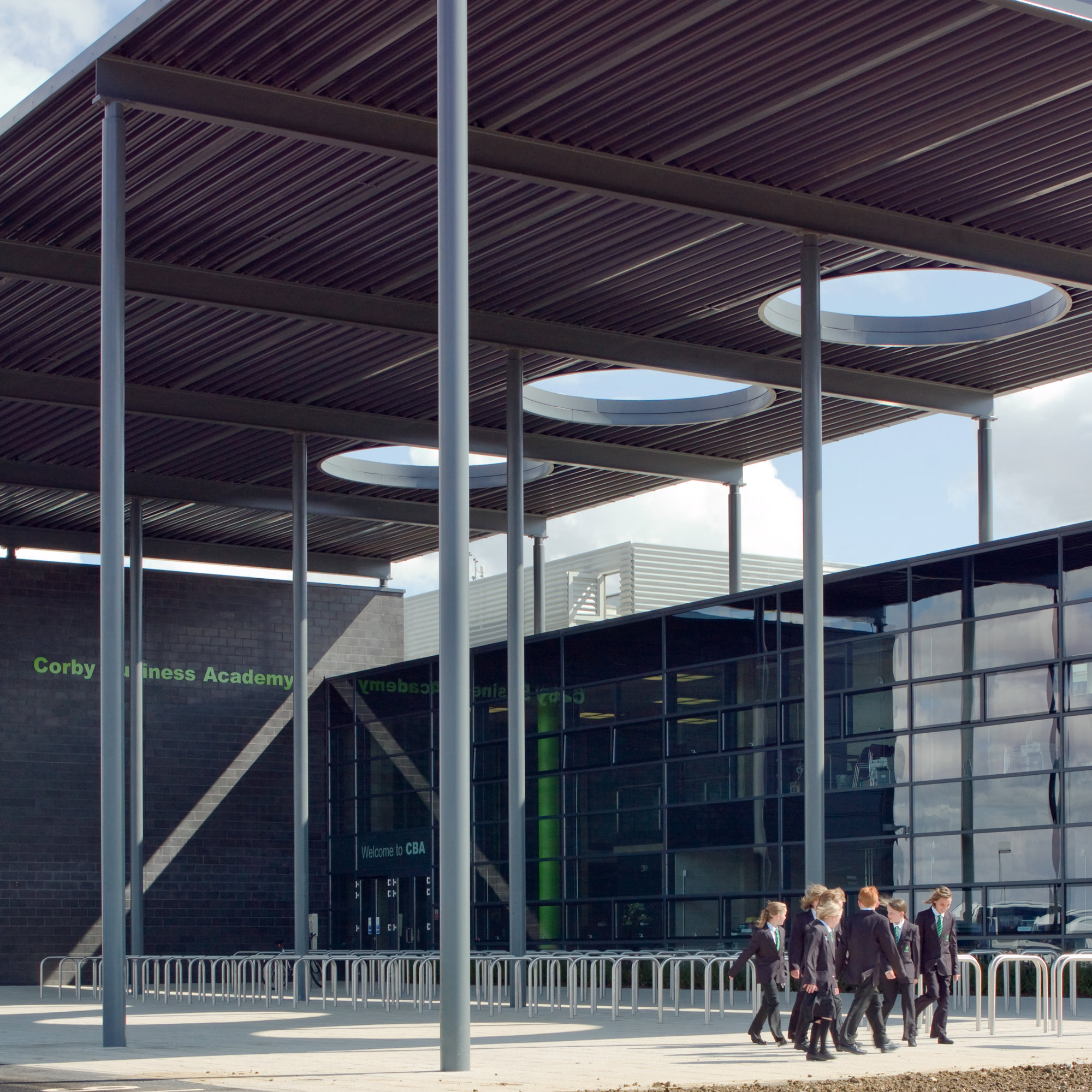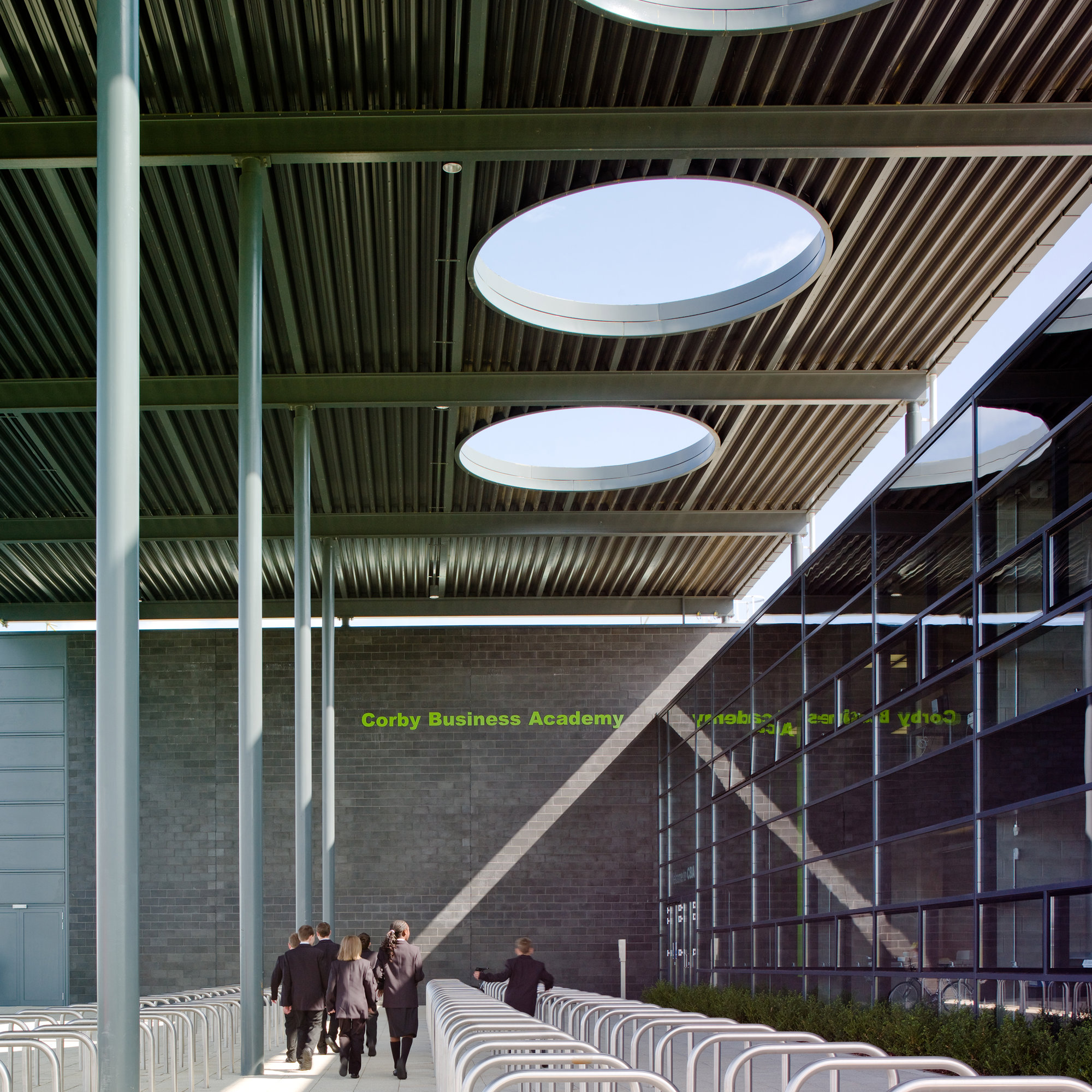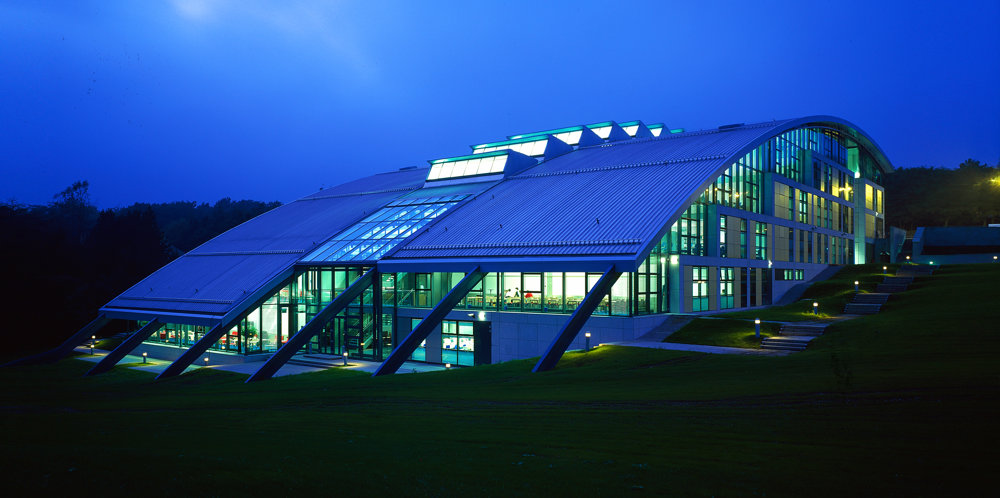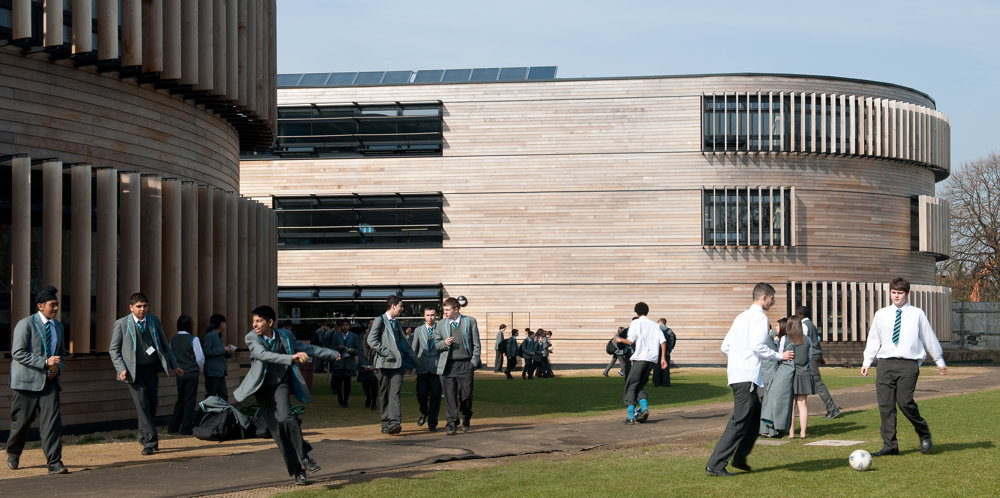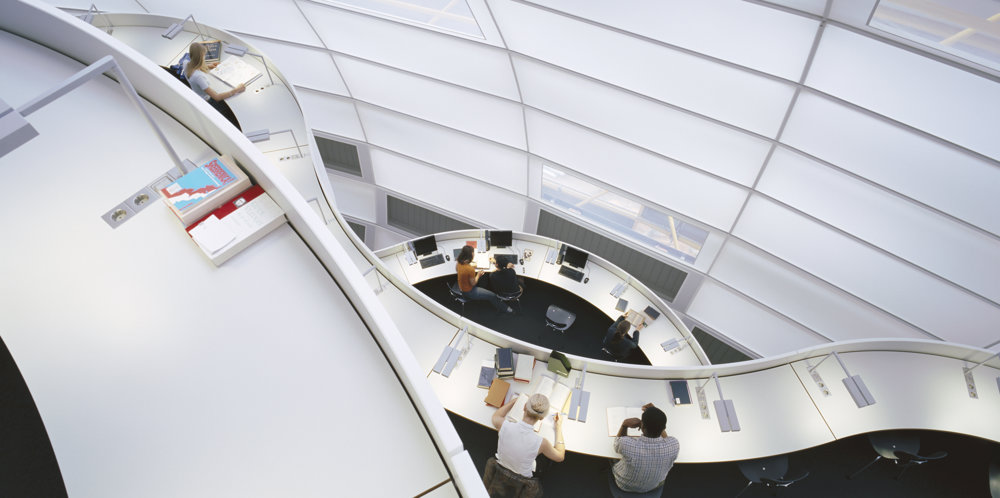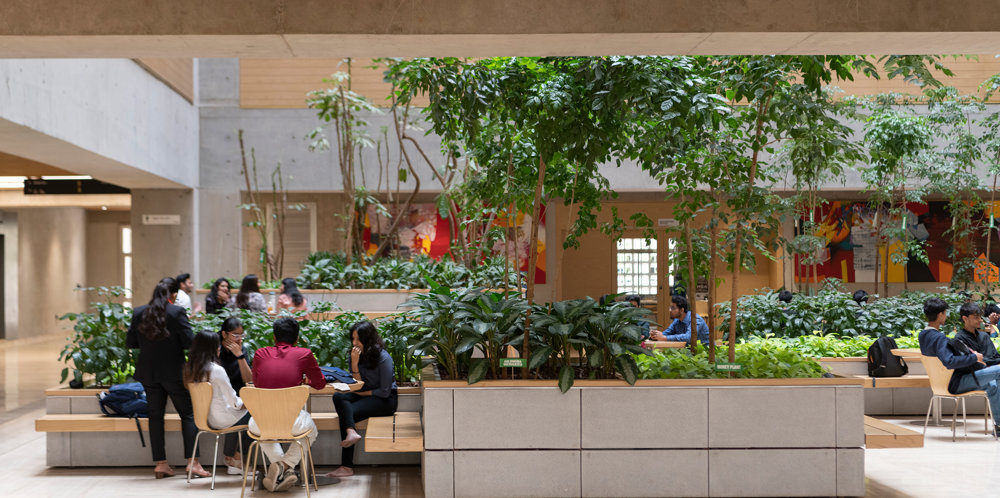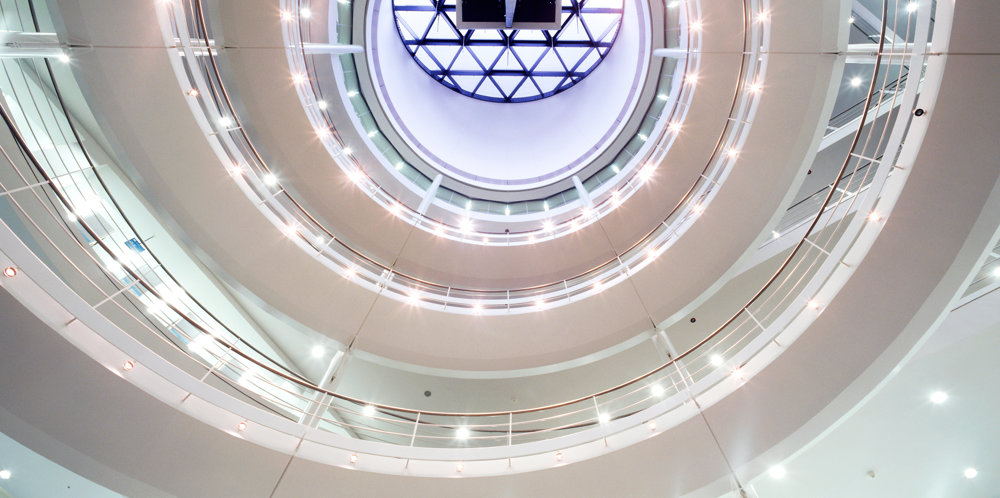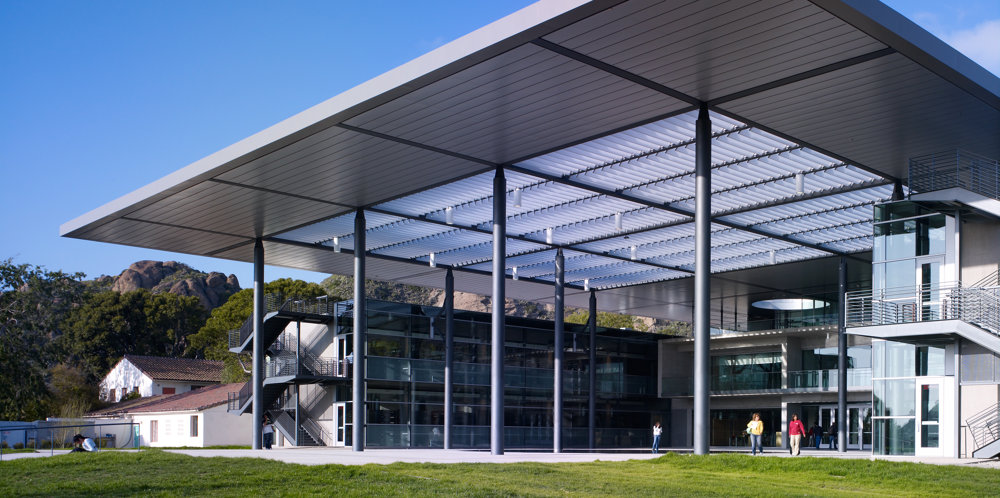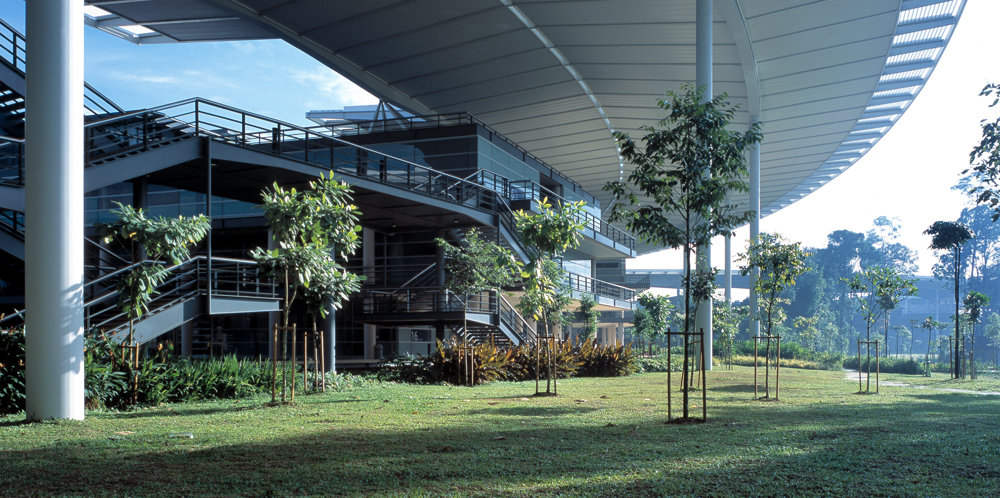Like many of the academies founded as a result of the government’s school building initiative in 2000, Corby Academy in Northamptonshire has a specialist academic focus that is driven by its links with the local community – in Corby’s case, this is ‘Business and Enterprise’. Accordingly, the design aims to create a stimulating, professional environment that encourages teamwork and entrepreneurial spirit and can help to prepare students for the world of work.
The simple rectilinear two-storey building is punctuated by six glazed atria, three on each side, which open the building to daylight and views of the surrounding countryside. Rather than supporting pastoral ‘house’ spaces for the 1,200 students, the atria are subject-focused and distinguished by bold colour-coded signage and upholstery. The classroom walls are fully glazed, animating the central spaces, while allowing natural supervision, and to ensure peaceful study, the teaching and circulation areas are carpeted. Inside and out, the materials palette is designed to be durable: the solid façade contrasts polished black stone at either end with textured silver block work along the building’s length. The main entrance is protected by a large steel roof canopy, and sheltered on one side by the double-height block containing the sports hall. A separate community entrance to the south provides access to the academy’s flexible 650-capacity theatre and restaurant, and enables the facilities to be used by the wider community out of school hours.
A designated special provision unit housed within one of the atrium hubs provides specialist facilities for around 70 disabled students. The atrium is semi-private, so that activities can be as discreet or integrated as required, and the space contains a hydrotherapy pool and a small landscaped garden. The design also incorporates a number of energy saving features, including wind catchers on the roof, which help to naturally ventilate the classrooms; angled walls at the back of the ground floor classrooms that sit below light wells and bring daylight into the furthest recesses of the building; movement sensors on light fixtures; and fritting on the glazed atrium to reduce glare while maximising natural light.










